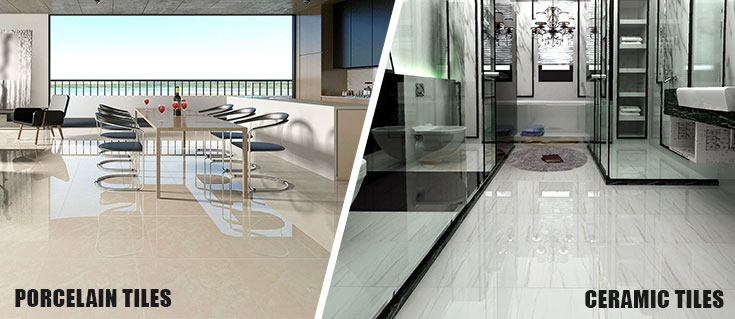What is the difference between porcelain and ceramic?
A lot of construction work and pottery tend to use either porcelain or ceramic. The aesthetic beauty brought about by these materials happens to be the reason behind their popularity.
The core difference between porcelain and ceramic is that porcelain is vitrified and impermeable before glazing while ceramic is porous if not glazed since it does not undergo a full vitrification process.

What Is Porcelain?
Porcelain is a type of ceramic compound fused with clay. Vitrification is the process used to make porcelain. The art originated from China but the name is derived from Italian word porcellana.
Characteristics of Porcelain
- Has a low water absorption rate
- Tend to be durable
- They are translucency
- Have hard and tough traits
- Tend to be chemically and thermally resistant
- Has fewer impurities
What Is Ceramic?
Ceramic is a class of compounds that contain different types of building and crafting materials. The terms were derived from a Greek word that means tiles or pottery.
The surfaces of the material are normally glazed to reduce porosity by the use of glassy and amorphous ceramic coatings.
Ceramic compounds are mainly used in the production of semi-conductors, domestic and industrial products.
Characteristics of Ceramic
- Tend to be non-metallic and inorganic in nature
- The structure has both ionic and covalent bonds
- lack definite structure
- Tend to be flexible
- Has a higher water absorption rate
- Contain a lot of impurities
- Have a less dense structure
Comparison Chart: Porcelain Vs Ceramic
| Basic Terms | Porcelain | Ceramic |
| Meaning | A class of ceramic made out of fussing clay | A class of material that is semi-permeable, amorphous, and inorganic in nature. |
| Vitrification Process | Completely vitrified and impermeable even before glazing | Do not under vitrification process hence remain porous if not glazed |
| Kaolin Content | Higher amount | Lower amount |
| Ability to Absorb Water | Lower absorption rate | Higher absorption rate |
| Durability | Higher durability rate | Lower durability rate |
| Price | Quite expensive | Less expensive |
| Density | Quite dense | Less dense |
| Cutting | Difficult to cut | Easy to cut |
| Derived Name | Old Italian word Porcelland | Greek Keramikos |
| Porosity | Less porous | More porous |
Core Difference Between Ceramic and Porcelain
- Porcelain is made out of fused clay at a high temperature while ceramic is an inorganic material made out of clay by heating and solidification
- Porcelain is translucent whereas ceramic are opaque
- Porcelain is derived from old Italian word porcelland while ceramic from Greek word keramikos
- Porcelain is quite dense in structure while ceramic less dense
- Cutting ceramic materials is quite easy while porcelain is quite difficult
- Ceramic is more porous while porcelain is less porous
- The price of ceramic is quite affordable while that of porcelain is expensive
- Porcelain tiles are durable while ceramic tiles are less durable
- Porcelain has a lower water absorption rate while ceramic has a high water absorption rate
- Porcelain has a higher amount of kaolin while ceramic has a low amount of kaolin
- Porcelain is fully vitrified while ceramic do not undergo vitrification process
Read More: Difference between Aromatic and Aliphatic Compounds
Comparison Video
Summary
The main difference between porcelain and ceramic is that porcelain is a type of ceramic made out of fused clay at a high temperature while ceramic is a class of inorganic material which is semi-crystalline and amorphous in nature.